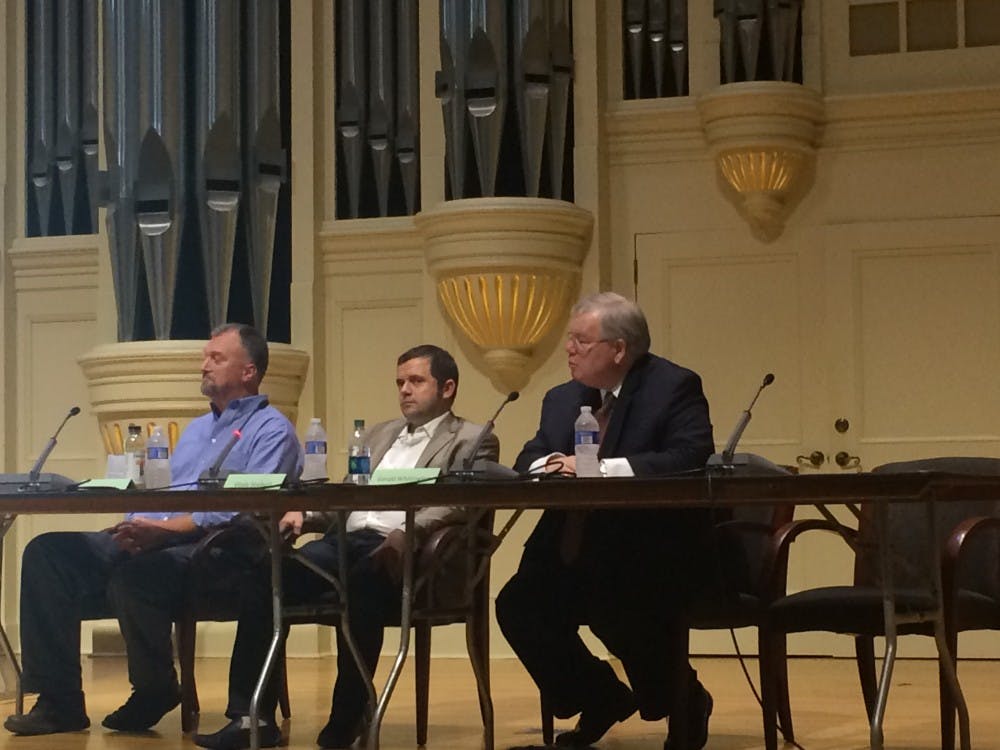As the sun was setting at Elon University on Tuesday, a panel of faculty and staff members talked about the future of solar power.
At the discussion, “A Solar Powered Future: Are We There Yet?,”panelists identified a need for solar power and discussed technological, economic and political considerations for increasing its scale.
Dave Gammon, moderator of the panel and associate professor of biology, said solar power makes sense because it is a renewable source that is widely available.
“There are some real problems with basing an economy on non-renewable resources if you plan on doing that over a number of years,” Gammon said.
Elon expects to collect solar energy from nearly 10,000 panels at Loy Farm, a 15-acre field with solar panels on South Oak Avenue. The university intends to start using the panels within a week of the Sept. 22 panel discussion, according to Robert Buchholz, associate vice president for facilities management and director of physical plant.
Gerald Whittington, a panelist and senior vice president for business, finance and technology, said the university’s solar panels are expected to generate energy and are an important learning tool.
“The most important reason for doing this for us was the educational value for all our students — to be able to do research, explore and consider solar power for use in their own lives when they come out of Elon,” Whittington said.
Elon already uses energy from solar panels on the roof of Lindner Hall. There are also solar thermal panels that reach Colonnades Dining Hall, two Colonnades buildings and two Danieley buildings.
But Whittington said the new North Carolina state budget, which does not include tax credits for solar and other renewable energies, might discourage solar power investors from coming to the state.
“The latest action of the North Carolina legislators would take investors interested in doing it in North Carolina to other states,” he said. “People looking for return on that money, and a lot of those come in tax credits.”
The other panelists — Scott Wolter, associate professor of engineering, and Vitaliy Strohush, assistant professor of economics — explained how solar power has become more accessible.
Wolter said silicon, the material now used in most solar panels, is readily available in the environment.
Strohush added that the recent price drop in silicon indicates the potential for wider use of solar panels in the future.
“The dropping price of silicon actually contributed to the dropping price of solar panels,” he said. “So you can go and put the panels on a roof, for example.”
For senior Ashley Gherlone, the economic part of the discussion was the most impactful.
“[Strohush] said that it’s cheaper to have solar panels,” Gherlone said. “I think that’s something that gets through to anyone, whether they believe in it or not.”
Sophomore Maritza Gonzalez, who also attended the event in Whitley Auditorium, said the panelists brought to her attention some of the current limitations on solar power usage.
“I was always curious about why we didn’t invest more in solar energy,” Gonzalez said. “This confirms that there are problems that need solutions.”


